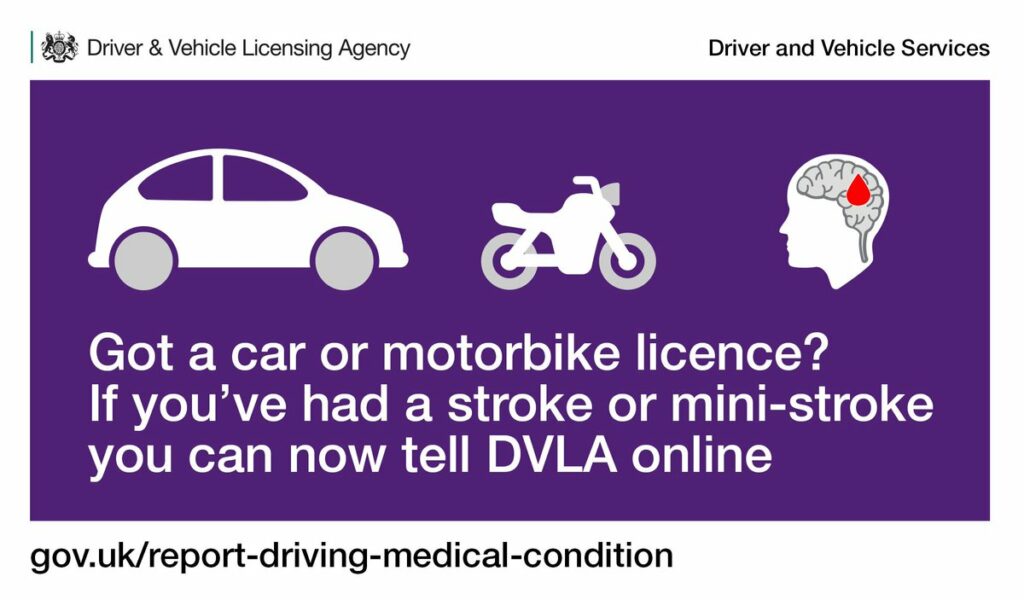Specifics of driving after a stroke - transient ischemic attacks and other brain diseases
Can a person get behind the wheel after a stroke? You will learn more about this below. But first of all, we advise you to consult your doctor on this issue.
Can you drive after a stroke?
Experts recommend that you refrain from driving for at least a month after a stroke. It all depends on what type of stroke and type of driver’s license you have.
Most drivers can get back behind the wheel just a month after suffering a transient ischemic attack (TIA), popularly known as a “microstroke.” If you have experienced several microstrokes in a row, you can’t get behind the wheel until three months have passed.
For other, more dangerous types of stroke, or if you are a bus, taxi, or truck driver, different rules apply. Before you can get behind the wheel again, you will need to get a doctor’s approval. You may never be able to drive again.
For most people, giving up driving means losing their independence and freedom, which is frustrating, but there’s a reason for that.
Why can’t you get behind the wheel right after a stroke?
Even if you’re recovering quickly, getting back behind the wheel can be dangerous. Strokes have temporary or permanent consequences that affect your ability to drive safely, for example:
- Physical effects (weakness in the arms, legs, or both limbs at the same time), changes in sensation, pain, and impaired coordination.
- Vision problems (double vision or blurred vision, loss of central vision, or visual field defects (loss of the field of view, often on one side).
- Cognitive impairments that can diminish the ability to concentrate, orient, perform multiple tasks simultaneously, and assess the situation on the road. There may be problems with memory and perception of space and time.
- Fatigue. Severe fatigue affects your ability to drive.
- Epilepsy. Some people develop epilepsy after a stroke, which affects their ability to drive.
If you want to get behind the wheel again, your treating doctor should assess your ability to drive safely and provide relevant information to the representatives of the Driver and Vehicle Licensing Agency (DVLA or DVA in Northern Ireland).
Your doctor may seek help from other specialists or medical consultants from the DVLA.

How soon after a stroke can you get behind the wheel?
The rules regarding the period during which you can return to driving vary depending on the type of stroke and the driver’s license.
Ischemic stroke (including lacunar stroke) or transient ischemic attack (TIA, or “microstroke”)
License to drive a car or motorcycle: it is forbidden to drive for a month after an ischemic stroke or one episode of a transient ischemic stroke. You don’t need to inform the DVLA about your condition during this time.
If, a month later, the doctor comes to the conclusion that you still have signs of cognitive disorders or visual impairment, most likely, you will have to wait a little longer. If you have only the weakness in the extremities, you may be allowed to be back behind the wheel.
If you have experienced several microstrokes in a row in a short period of time, there is a ban on driving for three months.
License to drive heavy goods vehicles (HGV) or passenger carrying vehicles (PCV): it is prohibited to drive for a year. Immediately inform the DVLA representatives about your condition.
Taxi drivers should inform the local authority (or the Public Carriage Office if you live in London), which will decide when you can get back behind the wheel. Special rules apply to drivers of vehicles such as police cars and ambulances.
Hemorrhagic strokes
a) Subarachnoid hemorrhage
License to drive a car or motorcycle: it is forbidden to get behind the wheel until you get permission from a doctor. At the same time, you don’t need to notify the DVLA representatives about your condition. If you have undergone surgery to remove an intracranial aneurysm, you are prohibited from driving for six months.
License to drive heavy goods vehicles (HGV) or passenger carrying vehicles (PCV): there is a ban on driving for six months — this period can be increased or reduced depending on the location of the bleeding and the chosen treatment strategy. Don’t forget to inform the relevant authorities about your condition.
b) Intracranial hemorrhage due to infratentorial arteriovenous malformations (AVM)
License to drive a car or motorcycle: you can continue to drive and not notify the DVLA representatives until you have symptoms that may affect your ability to drive.
License to drive heavy goods vehicles (HGV) or passenger carrying vehicles (PCV): be sure to notify the DVLA representatives of your condition. Your driver’s license will be revoked for a while. If you don’t receive proper treatment, your license will be revoked without the possibility of reissuance. If the treatment is successful and you have no symptoms that could affect your ability to drive, you can get back behind the wheel.
There are other conditions connected with strokes that can affect your ability to drive a vehicle, such as:
Epilepsy: If you have a seizure or develop epilepsy after a stroke, you can no longer drive. Don’t forget to notify the DVLA representatives of your condition. If you had a seizure within 24 hours after the stroke, but the symptoms have since disappeared, a DVLA representative will assess your case on an individual basis.
What happens if you don’t inform the DVLA representatives about your stroke?
In this case, you can be fined up to 1,000 pounds. In addition, you may be held liable in the event of an accident.
Don’t be afraid to notify the DVLA of health problems. It’s easy. You don’t even need to leave the house to do this. If your doctor prohibits you from driving for three months, you will need to give your driver’s license to the DVLA.
The doctor said I can’t drive — what’s next?
You must notify your insurance agency and the DVLA. Failure to comply with this requirement is subject to criminal penalties. You can be fined 1,000 pounds and prosecuted if you do get behind the wheel and get into an accident.
You may be offered to undergo an assessment at your local mobility assessment centre, after which the DVLA will decide that you can either:
- keep your driver’s license and continue driving
- get a temporary driver’s license
- get a license, but only for driving a car adapted to specific conditions
Otherwise, the DVLA representatives will decide on a ban on driving and revoke your driver’s license.
CASE STUDY
Back behind the wheel after a stroke. This is Nigel’s story.
Nigel King, 74, was an experienced driver with 50 years of experience, but in 2018, as a result of a stroke, he had impaired mobility in his left hand and forearm. He could no longer drive the car as before.
Nigel, from Enfield, was worried that he would never be able to drive again. He reported his condition to the DVLA, which suspended his driver’s license, but Nigel dreamed of getting back behind the wheel.
When the rehabilitation period began, the neurology department of the local hospital advised Nigel to contact a specialist in the assessment of driving skills, so that he would tell him about his capabilities and advise how to re-equip the car for safe driving with one hand.
Nigel booked a consultation at the local Mobility Assessment centre in Welwyn Garden City.
Nigel said: “After the first on-call consultation, I came to the center and performed a test to determine cognitive abilities. After that, an instructor and therapist walked me to a dual-control car. A wheel spinner, or a brodie knob, was already installed so that I could make sure that I could drive comfortably and safely.
At first, I was uncomfortable. Even though I’m right-handed, it was hard to get used to the fact that I didn’t have to hold on to the steering wheel anymore. After the assessment, the instructor suggested that I take driving lessons so that I could get used to this new device.”
Nigel successfully completed the training and passed the tests, and in November 2019, he was returned his driver’s license. On the steering wheel of his Ford Fiesta with automatic transmission, a wireless brodie knob appeared, which is attached to the steering wheel, and acts as a lever with push-button control of indicators, running lights, wipers and horn.

Nigel concluded: “It took me a year to get permission to drive again. This is a difficult path. Don’t expect everything to work out right away. Be patient, take your time, focus, practice constantly, and you will achieve your goal. Being able to drive again gave me back my independence.”






